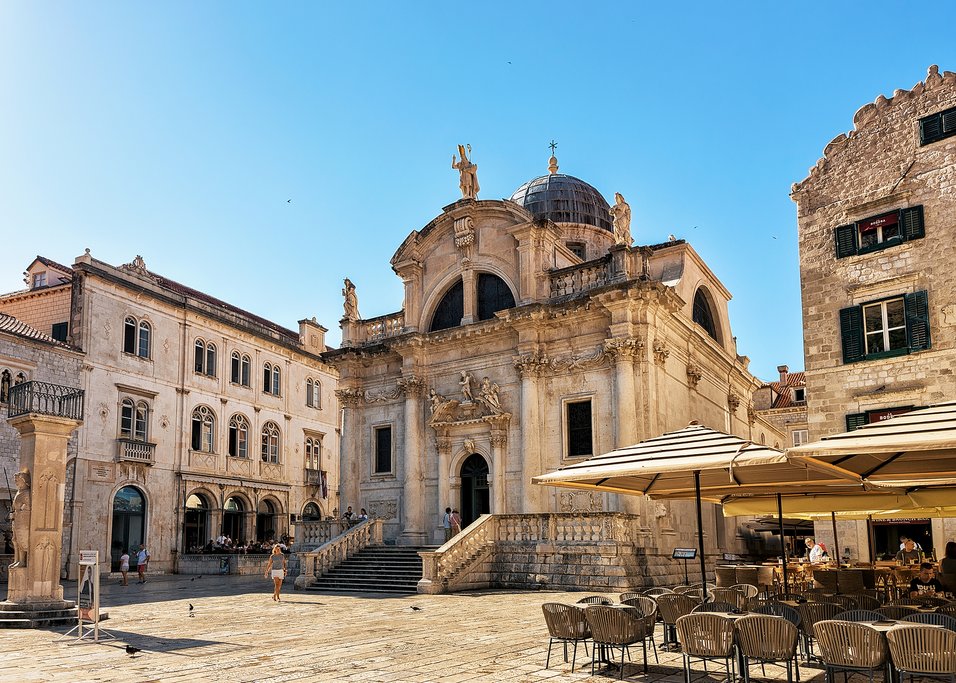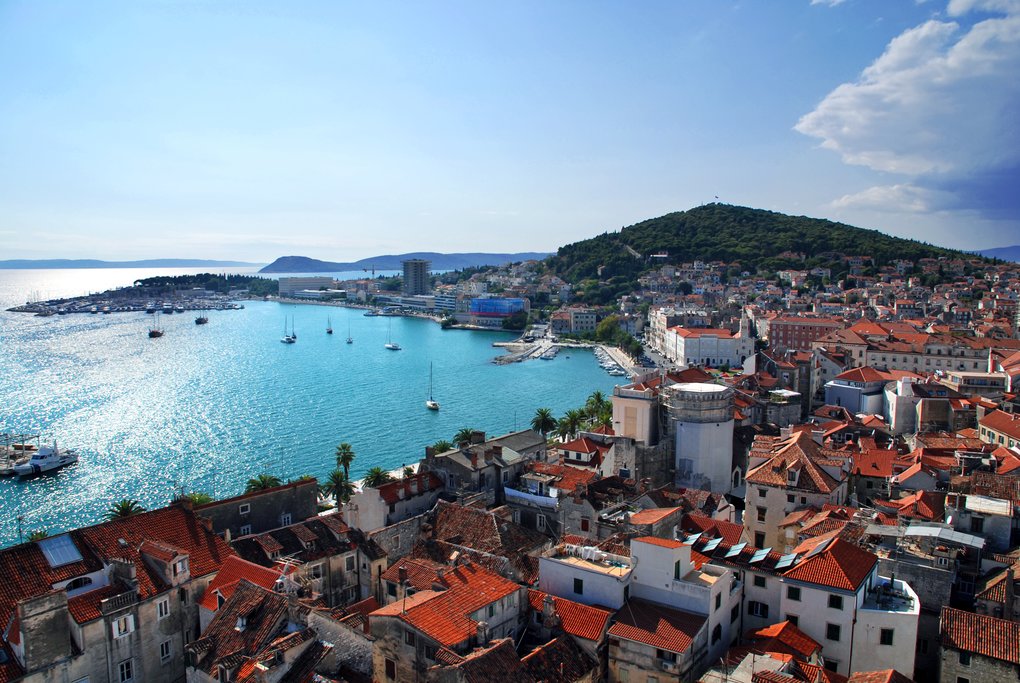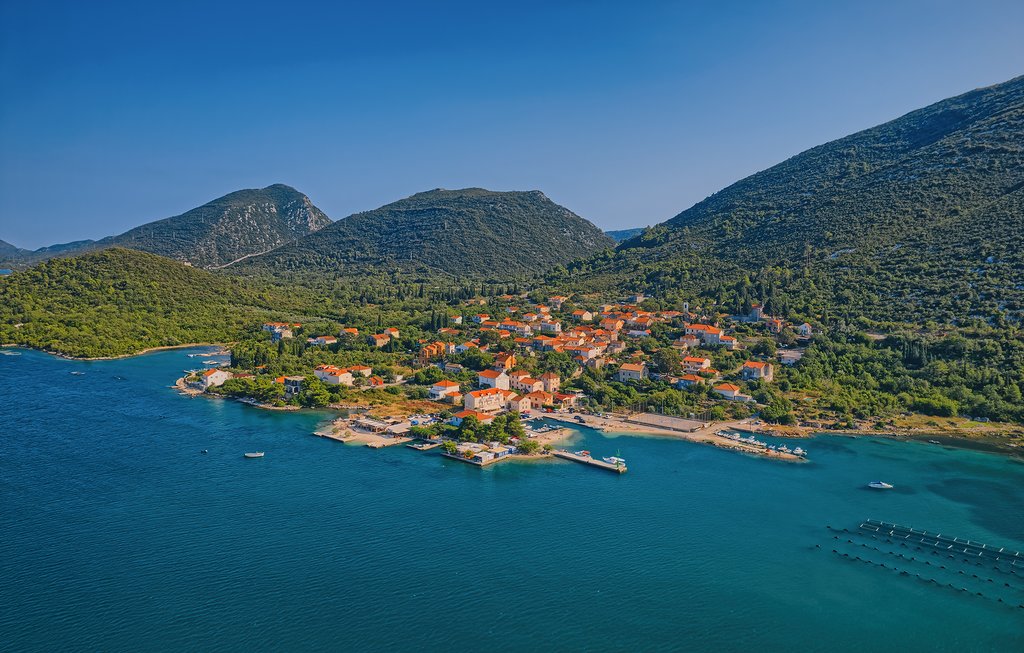Highlights
- Walk the ancient fortress walls of Dubrovnik
- Visit Croatian wine country in the Pelješac Peninsula and Korčula island
- Marvel at the remains of Diocletian’s Palace in the coastal city of Split
- Explore the waterfalls, lakes and rivers of Plitvice Lakes National Park
- Discover trendy cafés in Zagreb, one of the most beautiful capitals in Europe
Brief Itinerary
| Day | Highlights | Overnight |
|---|---|---|
| Day 1 | Welcome to Dubrovnik! | Dubrovnik |
| Day 2 | Historical Walking Tour of Dubrovnik | Dubrovnik |
| Day 3 | Dubrovnik to Korčula via Pelješac Peninsula | Korčula |
| Day 4 | Cycling & Wine Tasting Tour in Lumbarda | Korčula |
| Day 5 | Ferry from Korčula to Hvar, Sea Kayaking around Pakleni Islands | Hvar |
| Day 6 | Free Day in Hvar | Hvar |
| Day 7 | Ferry from Hvar to Split, Walking Tour of Split | Split |
| Day 8 | Split to Zadar | Zadar |
| Day 9 | Zadar to Zagreb, Stopping at Plitvice Lakes National Park | Zagreb |
| Day 10 | Depart Zagreb |
Detailed Itinerary
Day 1: Welcome to Dubrovnik!

Upon arrival at the airport, a private transfer will take you to your hotel to check in. Depending on your arrival time, the rest of the day will be yours to settle in and explore the historic city on your own.
Often referred to as the "Pearl of the Adriatic," Dubrovnik is a world-renowned city of exceptional charm. Take some time to explore its 16th-century stone walls, including the Minceta, Lovrijenac and Revelin fortresses, visit Onofrio's Fountain and the Church of Saint Blaise (St. Vlaho), and stroll along the limestone-paved Stradun, Dubrovnik's main street to get your bearings. Dubrovnik also offers excellent nightlife and some of Croatia's best restaurants and wine bars.
In the late afternoon, hop aboard a cable car and ride to the top of Srđ Mountain for stunning views of Dubrovnik and the nearby Elafiti Islands. For some exercise, you can walk back down the hill while enjoying views of the city below.
Day 2: Historical Walking Tour of Dubrovnik

Start your day early (around 8 am) to avoid the crowds and to embark on a guided tour of Dubrovnik where you'll meet your expert guide outside the entrance to the medieval city at the 16th-century Pile Gate. Entering Old Town, you'll uncover centuries of the city's rich history as you listen to stories of local life and legends and of the importance Dubrovnik once held in the era of the Republic. Highlights include Onofrio's Fountain, the 15th century Rector's Palace, Luza Square, the Church of St. Blaise, and the café-lined streets of Brsalje Street.
After touring the streets and alleys, you'll head for Lovrijenac Fortress as well as the city's impressive defensive walls, the second-largest set of city walls in the world. At certain places the wall rises 75 feet high, offering excellent vantage points for photos of the coastline.
For the rest of the afternoon, explore Dubrovnik and its surroundings on your own or enjoy the afternoon sun on the nearby beaches. Come early evening, you can get stunning panoramic views over the city and Adriatic by taking the cable car up to Srđ Mountain before descending back down for dinner at one of Dubrovnik's great restaurants.
Day 3: Dubrovnik to Korčula via Pelješac Peninsula

Today you'll leave Dubrovnik behind and transfer about an hour northwest to the Pelješac Peninsula as you make your way to Korčula. En route, you'll stop in the medieval city of Ston to explore one of the longest defensive stone walls in Europe (originally built to keep predators away from the town's saltpans) and discover the importance this area held in the 14th century. Discover beautiful views over Ston and its glittering saltpans—one of the oldest and still active in the Mediterranean—from a parapet walkway on Ston's 3,937-foot (1,200 m) wall.
Reward your efforts with a light meal of Ston's famous fresh oysters or mussels accompanied by a glass of local Dingač red wine. Should you choose, you can take a tour of one of the area's family-run wineries and sample Dingač's famous reds.
When you're ready, transfer to the nearby island of Korčula, which boasts a rich history. Once on Korčula, the afternoon and evening are yours to discover this little island's numerous restaurants, taverns, shops, and bars as you roam the maze of gray stone houses, alleys, churches, and squares. Check into your hotel in Old Town before heading out to explore, either on foot or perhaps on a rented bicycle, traveling from the town center to one of the secluded beaches on the island. You also might want to sample Korčula's delicious Grk and Pošip varietals of white wine.
Day 4: Cycling & Wine Tasting Tour in Lumbarda

Today, you'll take a cycling tour (private or with a group) across the island from Korčula Town to Lumbarda with stops along the way to visit beaches and local wineries. The tour typically takes 3-5 hours.
Pick up your bike and meet your guide in Korčula and ride out of the town south toward Lumbarda. You will cycle through fields, villages, and wineries, covering asphalt, gravel, and dirt roads with vistas opening up to the Adriatic Sea as well as to the impressive Mt. Ilija on the nearby Pelješac peninsula. This gentle route explores the ancient and historical sites of the eastern side of the island as you work your way to the spread-out village of Lumbarda. Boasting beautiful beaches and centuries-old winemaking traditions, Lumbarda is home to Grk, a white grape variety that will pair well with your lunch or dinner. Some of Croatia's best white wines are produced on Korčula and you won't be left wanting.
Spend some time relaxing on one of Lumbarda's beaches before returning to Korčula Town for the evening.
Chat with a local specialist who can help organize your trip.
Day 5: Ferry from Korčula to Hvar, Sea Kayaking around Pakleni Islands

Catch a morning ferry from Korčula to Hvar (1.5 hours) and get settled into your hotel. The most popular island in Dalmatia, Hvar draws visitors for its natural setting, mild climate, and its historic town of the same name. You'll have the rest of the morning to explore Hvar Town, where you can visit St. Stephen's Cathedral or climb the steps to the terrace outside of the historic Arsenal to enjoy views over the harbor and the surrounding area.
In the afternoon, pack your swimwear and towel and head to the beachfront for your guided kayak and snorkel trip to the Pakleni Islands. The islands are the most beautiful part of the Hvar Riviera and are a favorite retreat for locals seeking to escape the summer heat. Altogether, there are 14 wooded and rocky islets, which you will get a chance to explore by kayak.
Day 6: Free Day in Hvar

Today, you have free range to explore Hvar at your own pace. A great way to discover much of the island is to rent a scooter in Hvar Town and drive along the coastline through the many olive groves, lavender fields, and vineyards, stopping along the way to lie out on a beach you happen upon. In the afternoon, switch gears and join a half-day wine tour to sample some of the region's best wines as well as learn about its 2,400-year-old history. In the early evening, bring a bottle of wine and head to Tito's Caves, just north of Stari Grad, for a picnic as you watch the sun set from these hidden-away caves.
The more athletically inclined might prefer an early morning start to trek up to the 16th-century Španjola Fortress for views over Hvar Town and the Pakleni Islands, followed by a cycling tour around Hvar to explore the inner part of the island. Alternatively, another great option is to embark on a hike from Hvar Town to explore Velo Grablje, a near-deserted 500-year-old town, and Malo Grablje a nice hike that takes you down a canyon into the village. Here you can stop for lunch to enjoy a delicious meal at perhaps the most authentic of the island's taverns.
One last option is to explore the nearby Pakleni Islands. You can rent a private taxi boat to tour around the islands for the day, take a 15-minute taxi boat ride to the islands of Jerolim and Stipnska, or continue on to other islands further out to walk around and explore. For the more adventurous, there is the option to go on a guided full-day or half-day sailing or kayaking tour of the islands—a great way to discover the many secluded beaches and lagoons!
After the day's adventures, treat yourself to a drink in Hvar Town's ancient piazza overlooking the Venetian loggia, 7th-century fortification walls, and the oldest municipal theater in Europe.
Day 7: Ferry from Hvar to Split, Walking Tour of Split

In the morning, you'll catch a one-hour ferry from Hvar to Split to check into your accommodation before setting out to explore your surroundings on a walking tour. An ancient coastal city founded 1,700 years ago by Roman Emperor Diocletian, Split's Old Town includes a number of impressive sites, including Peristyle, Cathedral of St. Dominus, the Piazza, and Diocletian's Palace, one of the best-preserved Roman buildings in the world.
Depending on a time that suits you, you'll meet your local guide for a private tour of Split's popular attractions, where you'll start in Peristyle Square, taking in the 3,500-year-old sphinxes Diocletian brought back from Egypt before exploring the 4th-century Diocletian's Palace. Other noteworthy attractions include the seafront Riva, the Iron Gate, Pjaca Square, and the 15th-century Town Hall.
Day 8: Split to Zadar

Today, you'll spend time exploring the Adriatic coast as you make your way from Split up to Zadar. When you arrive, check into your hotel before setting out to familiarize yourself with the ancient capital of Dalmatia.
A historical center of the Dalmatian Coast, Zadar is famous for its picturesque coastline full of islands and vibrant blue waters, as well as fresh seafood and unforgettable sunsets. Take the rest of the day to relax and explore. You may wish to stroll along Zadar's Riva, a wide ribbon of stone paths bordered by a grassy park on one side and the sea on the other. It runs along Old Town’s waterfront, where it comes alive at night with vendors and Dalmatian a capella groups called Klapa that serenade the passersby, including folks on yachts who dock there.
Take in a legendary sunset (Alfred Hitchcock is on record saying they're the best in Zadar) from Café Brazil before discovering the pretty patterned lights of the Monument to the Sun while listening to the nearby Sea Organ.
Driving time (Split to Zadar); 2 hours
Day 9: Zadar to Zagreb, Stopping at Plitvice Lakes National Park

You'll want an early start for your drive to Plitvice Lakes National Park, the first Croatian national park—and the most popular park in the country.
Plitvice Lakes National Park is Croatia’s natural masterpiece, gorgeous at any time of year. The park is home to an exquisite collection of 16 emerald green and blue travertine lakes, more than 90 waterfalls, and numerous caves, which together comprise a UNESCO World Heritage Site. The lakes are surrounded by beech and pine forests and are home to extensive wildlife.
Here, you can request a private, expert local guide to lead you throughout the park along the wooden paths and bridges to show you the most impressive points of interest and explain the significance of its history and natural features. After your tour, you will have some free time to continue exploring or you may wish to bring a bought lunch (and a bottle of wine!) with you to enjoy a picnic.
When you're finished in the park, continue your onward journey to Zagreb, Croatia's capital. Check into your hotel to settle in before spending the rest of the day as you like. The city center is easily walkable and the streets and parks are easy to navigate by foot. All the main attractions and restaurants are within walking distance. Consider visiting the Homeland War Museum or The Museum of Broken Hearts, or stroll through the city center, enjoying 17th-century neo-baroque architecture found at Zagreb's Art Pavilion and Croatian National Theater.
Zagreb also has a number of beautiful city parks which are great for exploring and people watching, especially in the late afternoon. Maksimir is a great option, with a variety of cafés nearby to pick up a coffee for your stroll.
Driving time (Zadar to Plitvice): 1.5-2 hours
Driving time (Plitvice to Zagreb): 2 hours
Day 10: Depart Zagreb

If you have a free morning before departing, make like a local and visit one of the many café-bars in central Zagreb. Try the pedestrianized section around Bogovićeva and Preradovićeva or the popular Tkalčićeva street for a morning coffee and pastry and to people watch before you say farewell to Zagreb and head to the airport.
Driving time (Central Zagreb to the airport): 30 minutes
